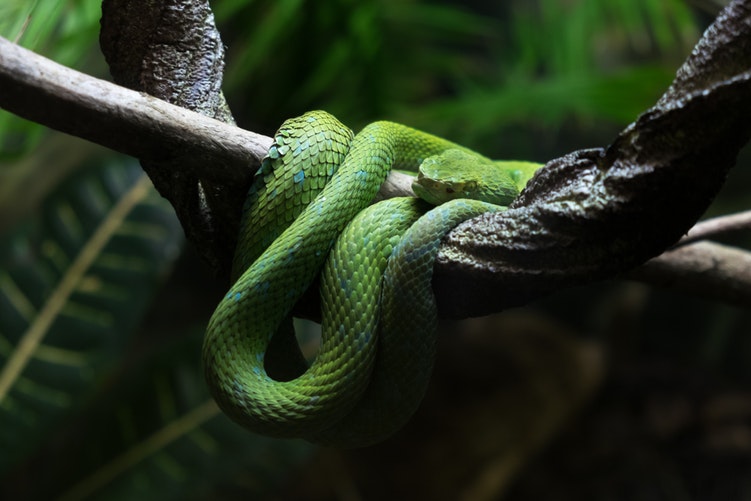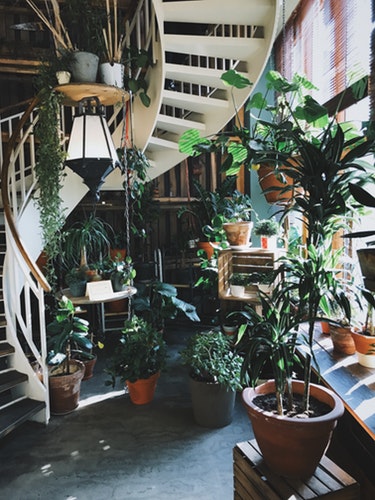Gardens can be lovely, productive, and filling, making them an overall great time investment for you and your outdoor life. On the other hand, they can also be downright terrifying if you have a fear of snakes. One source assures that, beyond a handful of types, snakes aren’t venomous by boasting that only “rattlesnakes, cottonmouths, copperheads and coral snakes” (Dohner, 2011, para. 1) fall into this dangerous category.
To this, I say that some of us are Kentucky folk, and in Kentucky, three of those listed snake types exist. According to the Kentucky Department of Fish and Wildlife Resources, those of us in the bluegrass state can come across copperheads, western cottonmouths, and two different types of rattlesnakes (Monroe & Slone, 2002). Needless to say, if I feel a little uncertain walking into a garden, I have good reason to!
The fear is enough to prevent a person who would love to garden from diving into the prospect, but fortunately, there are options available for potential gardeners to help them lower the number of snakes that could end up inhabiting their garden, like these!

Make sure your yard is clean.
This tip, to be honest, is one of the most frustrating ideas on this list because part of what you would typically do to keep your yard in shape gets thrown out the window when you’re gardening. You can’t keep all of your plant life mowed and small if you have a full garden because certain plants will tower over a regular grass level. Sure, you can keep them pruned and the weeds trimmed around them as best you can, but there’s no escaping that certain crops are prime territory for a snake that loves to slither through larger plants.
What you can do to tend to this task is make your garden and the area around it as close to clean as you can. Steps like making sure you don’t have things laying in piles near your garden can be tended to in order to lower the odds of crossing paths with a copperhead. These piles can be a series of rocks that have gaps big enough for a snake to enter or even a stash of gardening equipment that leaves open territory for a snake to slither in. These dark holes are perfect for snakes, so by making sure that you put your gardening supplies away and keep tabs on potential hiding spots, you could lower the odds of finding a snake in your garden.
As well, be sure you’re keeping as much of the plant life in or near your garden as clean-cut as you can. You might have to have cornstalks towering toward the sky, but you don’t need to extend a snake’s ideal home outward by having too-large grass on any side of your garden. Basically, make this area as clean as you can in this regard!
Limit the snake food.
This one might sound odd, but let’s remember that snakes eat things that might be around your house—like rats. A snake is a wild animal, and it’ll go where it’s going to find its food when it’s hungry. In order to lessen the chances that they’ll choose your garden to slither into, cut down on their food supply by keeping the rodent population in check. This step opens up a whole new topic of how to lower the number of rats you have in your garden, but in general, you can take steps toward solving this dilemma by small details like cleaning up after your pets and putting edible things like seeds in places that rats can’t get to. Essentially, it’s like working to prevent a snake’s presence by taking away its food and making the garden less friendly to its natural habitat (Bragdon, 2006).
It’s worth noting that rodents by themselves are creatures that you might not want in your garden, especially since they don’t have the reputation of being the cleanest of critters. With this in mind, you ideally get two benefits from this step: fewer rats and fewer snakes.
Check your water amounts.
If you live in an area that has a decent number of snakes, you might be familiar with idea of snakes showing up in swimming pools. As odd as this concept might sound, it actually makes sense in the grand scheme of things since not only are certain snakes water snakes, but all snakes need water to live, just like the birds that show up at your birdbath or your dog drinking out of its bowl. The difference, however, is that once a snake gets in your pool, it can’t necessarily get back out in all circumstances. Whereas a bird can take a drink and go, a snake takes a drink… and can’t leave. Basically, it isn’t automatically that snakes are more drawn to the water in your pool than other animals. Other animals can just exit the area before you catch them.
This detail is important because, even though a snake might not have wanted to stick around until someone had to fish it from the pool, the water could still draw the snake there in the first place. Again, this might be a frustrating concept because water has to be a part of a garden, but if you keep tabs on how much water is laying stagnant on the ground, you could be preventing a snake visit. Any source of constant or significant water can draw a snake, even if the snake is “a significant distance away” (“How to Get a Snake Out of a Pool,” n.d., para. 3). Remove any reason why water would be that available to snakes to give them less reason to venture into your yard or garden.

Look at pet options.
As terrifying as snakes are, there are animals that won’t back down from them. Some of these animals might be ones that aren’t possible to keep as pets—like an eagle or a mongoose—but other species can step up to the challenge of helping you to manage your snake problem. Pedestrian pets like cats and dogs are useful for this endeavor, as are farm animals (pigs) and wild animals that you could lure into your yard with food (like skunks) (Barrington, n.d.).
You might be thinking that there’s no way you want to pit your dog against a venomous snake because venom is venom. Take comfort though that the dog doesn’t necessarily have to combat the snake to provide a reason against the snake lingering in your yard. No matter how domesticated your dog is, it could still be seen as a predator in the wild, and having that predator around your garden could be a deterrent from another predator that thinks of stopping by—like a snake. You can even train your dog not to fight a snake to prevent it from being harmed by the venom, but maybe to alert you that something is askew in your garden. This way, you and the dog could remain safe and unharmed from the snake.
Make a snake fence.
What might be a last-ditch effort to de-snaking your garden is a snake fence that surrounds your garden completely in a way that would keep the snake from being able to travel over or under it (“How Do You Keep Away Snakes, n.d.). The specific needs of this fence are what make it one of the less appealing methods, but the bottom line is that if a snake can’t get into your garden, then it can’t be in your garden!
Remember when making this fence that snakes can and do climb, no matter what you’ve heard. They can’t, however, climb on a smooth surface that doesn’t allow them to get any traction, so your material for this fence would need to be something of this nature. The angle of the fence can also make it so the snake would have a harder time climbing it, and it has to either align perfectly with the ground or be braced within the ground. If you allow any room at all between the bottom of the fence and the ground, a snake can find a place to slither into your garden.
It’s important to note that if you’re going to employ this fence method, you should make sure there are no current snakes in the area before you fence it in. Otherwise, you could be boxing a snake into your garden without giving it a decent way out—and that would be counterproductive to the point!

However…
Remember that no method is 100% guaranteed in this regard, so be careful and cautious in your garden in case a snake is near. You could lower the odds with these steps, but it’s better to be safe than sorry!
References
Anderson, C. (2013, April 26). 5 Ways To Keep Snakes Out Of The House And The Yard This Spring. HuffPost . Retrieved from https://www.huffingtonpost.com/2013/04/26/snakes-out-of-the-house_n_3165178.html
Bragdon, C. (2006, June 1). Keep Rats out of Your Garden. Retrieved from https://www.bbg.org/gardening/article/managing_rats_in_city_gardens
Dohner, J. (2011, August 29). Dogs and Snakes. Retrieved from https://www.motherearthnews.com/homesteading-and-livestock/dogs-and-snakes-zb0z11zphe
How Do You Keep Away Snakes. (n.d.). Professional Wildlife Removal . Retrieved from http://www.wildlife-removal.com/snakekeepaway.html
How to Get a Snake Out of a Pool. (n.d.). Professional Wildlife Removal . Retrieved from http://www.wildlife-removal.com/snake-pool.html
How to Rattlesnake Proof a Backyard. (n.d.). WikiHow . Retrieved from https://www.wikihow.com/Rattlesnake-Proof-a-Backyard
Monroe, B., & Slone, T. (2002). “Kentucky Snakes.” Kentucky Department of Fish and Wildlife Resources . Retrieved from https://fw.ky.gov/Wildlife/Documents/kysnakebook.pdf


